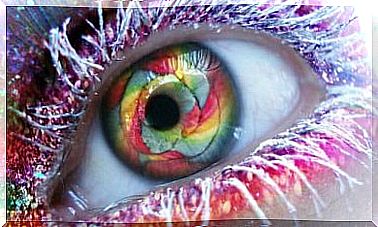Self-destructive Adaptation: Normalizing What Hurts

Have you ever heard of self-defeating adaptation? When we are pricked by the thorn of a flower, we feel it. However, sometimes it can happen that this same thorn sticks to us for a while.
We know she’s there, but the pain is different now. So much so that we can even hold out for a while until we decide to extract it. In human relationships, it sometimes happens the same way. This is called self-destructive adaptation.
People can normalize suffering in striking and unexpected ways. What’s more, most of us don’t know how far our innate coping capacity goes.
We often see this in work environments. Some people spend decades in a position where their rights are denigrated and where they are the victims of bullying. Can we hang on to the paycheck?
Sometimes it goes beyond a monetary issue. We can continue our denigrating work because we say to ourselves that “this is what it is and that is what there is”. Through these verbalizations and self-justifications, we adapt without feeling the weight of the psychological fracture that such a situation causes.
Self-destructive adaptation goes beyond mere masochism. It contains realities that are worth knowing. Let’s dig deeper into the subject.

Self-destructive adaptation: ignoring suffering
The phenomenon of destructive adaptation has been studied in the psychological field for years. It is something striking and inexplicable from the outside. Self-destructive and unregulated behaviors can only be understood from one point of view: one in which you get something in return.
For example, any addictive behavior, such as alcohol or drug use, is harmful. However, the person receives pleasure in return. Addiction and self-destruction go hand in hand. The same thing happens with practices such as cutting or self-injuring. In this case, the physical pain acts as an outlet for the emotional pain.
What explanation can we give to someone who has been stuck in an unhappy relationship for years? Why does a person who is constantly betrayed by another continue to maintain the emotional bond? What advantages can a person who continues to hold degrading employment enjoy? Let’s examine the possible causes.
The self-destructive personality
To understand the root causes of self-destructive adaptation, we have to get to the point: the human personality. Although it may surprise us, there is a profile that is moving towards these harmful practices to the point of normalizing them.
It was Theodore Millon, an American psychologist who pioneered personality research, who first told us about it. For Theodore Millon, self-defeating adjustment was often a trait of limited personality disorder.
- The self-destructive personality falls over and over again into the same types of damaging relationships.
- She voluntarily moves among people who deceive and disappoint her.
- She normalizes the abuses because they guide her relationships based on absolute dependence.
The masochistic personality
Beyond the self-destructive personality, there is another type of role model. This is the masochistic personality that would fall into a very specific clinical category : the self-destructive or masochistic personality disorder.
In one of his studies, Dr. Otto Kernberg defines the characteristics of this disorder. The people concerned have the following characteristics:
- Constant devaluation
- Not taking their needs into account.
- No participation in enjoyable activities.
- Extreme sacrifices to help others.
- Tendency to normalize (and even seek out) painful experiences marked by suffering.
- Refusal to be helped and distance from anyone who treats them with respect.
When the only thing we’ve known is the pain
Seeing how someone tolerates suffering within unsuspected limits never ceases to overwhelm us. However, before judging, it is necessary to understand.
Take the example of someone who suffered physical and psychological abuse as a child… Someone who from an early age suffered humiliation and suffering. Without a shadow of a doubt, such a background explains why many people tolerate pain and don’t react.

Self-defeating adaptation and fear of change
What will become of me if I leave this relationship? Where would I go? If I decide to quit this job, what will my opportunities be? Resistance to change in humans is a factor that we do not pay enough attention to. Sometimes it is so ingrained and puts such a brake on our potential and our well-being that it becomes pathological.
These are the situations in which the fear of change is more terrifying than the lived experience. Self-destructive adaptation tends to normalize so deep is the pain and humiliation. In these situations, it is essential to always have a good support network.
To break the spider web that self-destructive adaptation weaves, we need to nurture self-esteem and establish a distance from which we can perceive what is going on. Having someone to help us is essential. However, it all depends on ourselves and the belief that we do not deserve to tolerate the intolerable.









